The Hawks Have Landed
Oct 28 2015 0 Comments Tags: Distortion, Hawk, Spring Reverb, Tape / Disc Echo
Vintage Japanese Tape Echo & Spring Reverb Update:
Mid-seventies Japanese manufacturer Hawk Technical Works Co Ltd put out a range of tape echoes and spring reverbs branded Mirano and then Hawk aimed squarely at domestic home recordists. We were intrigued and decided to get hold of as many different models as possible and try them all out. The results so far are documented below - these are great machines with useful features, and interesting creative possibilities especially once pushed beyond their comfort zone. We're definitely keeping examples of some of them for the studio. This is a run through of our thoughts after testing all the models we've just listed for sale so far, plus one video demo - there are even more to come once we get them serviced and we'll be adding them and more demos this post in the future. All are available for sale at the time of writing; just click through from each to its page.
Hawk HE-2150A 5-Head Echo Unit
[UPDATE: WE'VE ADDED A QUICK DEMO TO THE LISTING - see it via the image above.] We were immediately intrigued on first sighting the Hawk HE-2150 open reel style tape echo: even if it sounded bad, it was one of the coolest tape echoes we’d seen. Classic clean seventies hifi styling and backlit vu meter below twin aluminium spools spinning behind the translucent smoked (aubergine!) plastic dustcover; adds a dose of classic Bond villain lair to any studio…
However, it doesn’t just look cool: serviced and fitted with new custom tape loops, this five head echo sounds as good as it looks. With three switchable replay heads - Off, Super-Repeat (at 0db), Repeat & Swell (at -6db) - and controls for tape speed, input level (for echo and dry signal), echo level/repeat/tone and master output - this is a full-featured tape echo. The sound is somewhat classier than the contemporary Ace Tone EC-20 - with which it shares a similar featureset - especially when driven into self-oscillation; this is yet another distinct flavour of tape echo - flexible and with a very pleasing sound quality indeed.
Mirano Echo Chamber T-4
[UPDATE: WE'VE ADDED A QUICK DEMO TO THE LISTING - see it via the image above.] This earlier Mirano-badged echo has a similar features to the HE-2150, but with the benefit of an extra replay head. There’s a small backlit meter and inputs/outputs are all front-mounted and via quarter inch jack sockets; this, along with an absence of phono sockets suggests this was aimed at the more serious professional user. It may not have the instant appeal of the 2150’s spinning reels, but the repeats are of a very high quality: this is a seriously-good tape echo. Messing with the tape speed on the shortest delay setting yields some unusual psychedelic warble effects, whilst on longer repeat settings, this echo shows its class. An uncommon and excellent tape delay.
Hawk HR-45 2 Channel Echo Unit
We've landed a selection of Hawk spring reverbs, and the fine-looking HR-45 is a favourite; the first one here was promptly removed to the studio for ‘testing’ and still hasn't been returned.
Sharing similar 70s Hi-Fi aesthetics with the HE-2150, this stereo unit offers input controls for mic in, and also mic/line echo input. Moving along is the four-way Mode selector switch with a choice between Normal, Reverse, Split and Mono reverb settings - Reverse sadly does not offer a backwards reverb, but switches the wet signal to the opposite channel. The twin vu meters look great and work well, but are not backlit. There’s a pair of quarter inch jack inputs on the front and rear as well as a bunch of connections on RCA phonos that belie its Hi-Fi background.
It’s a very useful and good-sounding spring - whilst overall it has a more-appealing the sound than the Pioneer SR-202W, there is a strong argument for having more than one spring timbre at your disposal (this from someone who has over a dozen in the studio).
Where things get really interesting is how this unit reacts to being overdriven - pure magic when a guitar is plugged into the mic input, but also very useable on a whole range of sources. The flexibility offered by being able to just drive the dry or reverb signal, or a combination of the two makes this a very creative tool: the overdriven reverb sound from this unit is highly-addictive!
Hawk HR-202 Echo Unit
The 202 could be approximately described as being a single input channel version of the 45 above. There are separate input controls for Echo and Normal for both Mic and Line inputs, Echo Level pot and Phase switch, as well as Master Output. Quarter inch input sockets for Mic and Line are on the front panel with stereo inputs/outputs on the rear via RCA phonos.
Overdriving the Mic input with guitar yields a meatier distortion than the 45 - this one really snarls and growls. Yet another flavour for the sound palette: I could justify keeping this one and the 45…
Hawk HR-20 Echo Unit
This is a mono version of the 202 above. Single quarter inch input socket on the front and RCA phono inputs/outputs on the rear. Select between Phono, Mic Lo and Mic Hi for the input depending on how much distortion you want to dial in - small backlit meter with simple Level and Echo Volume controls, this is an ease of use unit. It still overdrives wonderfully and has a sound of its own, leaving me pondering whether we could get away with keeping one of each in the studio.
0 Comments




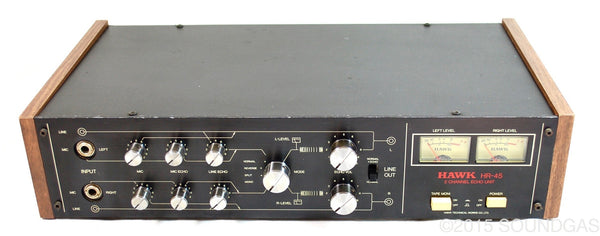
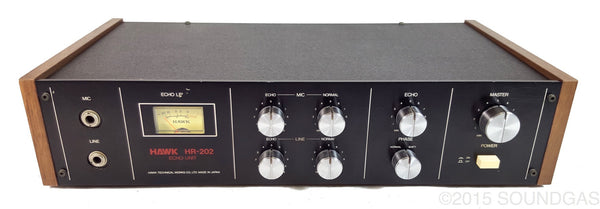
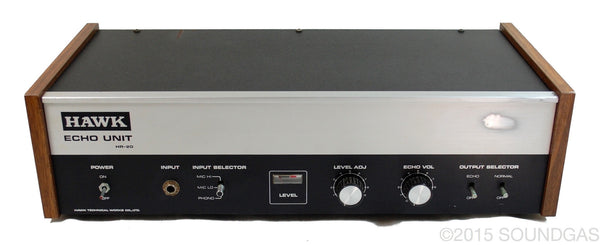

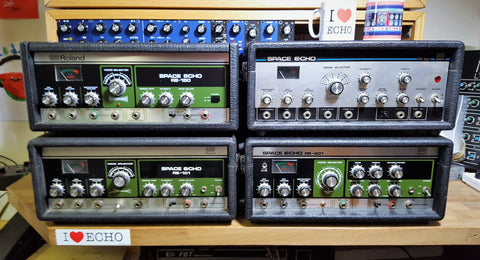
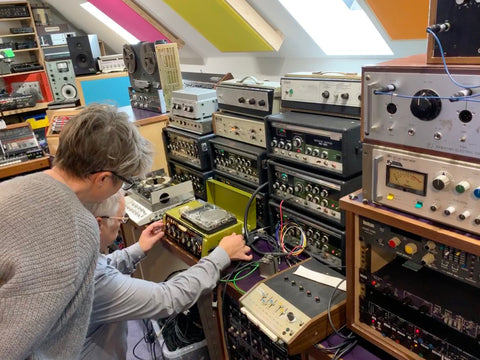
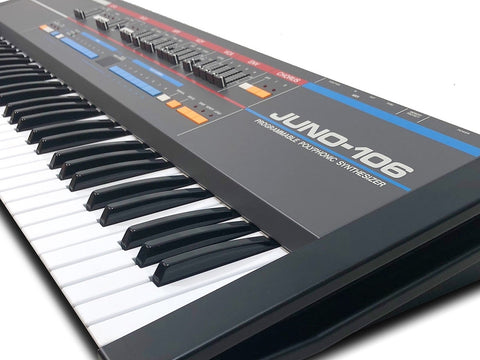
Leave a Comment